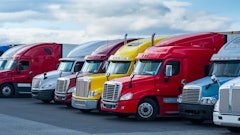
If 2020 has taught retailers anything, it’s that “good enough” is no longer good enough. According to Accenture, 94% of Fortune 1000 companies have experienced critical supply chain disruptions in the wake of the Coronavirus disease (COVID-19). It’s easy to see how retail, especially grocery retail, has been among the most impacted industries, as panic buying, driven by lockdowns, swept the globe. Empty shelves from toilet paper to pasta, as well as a dramatic increase in online demand, exposed the fast-moving consumer goods (FMCG) retail industry’s need for efficiency and agility across the supply chain. Those retailers who have adopted an agile approach to understanding and responding to demand have already seen the fruits of their efforts.
As we prepare for 2021 and beyond, the question is, how do FMCG retailers protect themselves from future disruption? While it’s vital to ensure that the supply chain remains strong in the face of immediate concerns, the correct approach to the “now” sets retailers up for successfully navigate future disruptions – whenever they may occur. Let’s explore some disruptive forces and the ways retailers can move beyond “good enough” by using artificial intelligence (AI)-enabled technology to connect multiple areas of their businesses.
The when, where and how to optimizing omnichannel operations
Omnichannel fulfillment methods like home delivery, click and collect and curbside pickup will only continue to rise in popularity. In fact, online grocery is expected to grow to an estimated 21.5% of the total U.S. grocery market by 2025.
However, an increase in fulfillment options puts extreme pressure on retailers. Store layouts, space allocation for key categories and inventory accuracy across distribution and fulfillment centers are only the tip of the iceberg. To fully address the effects of omnichannel growth on the supply chain, retailers need to adopt a unified platform that not only addresses all supply chain roles but interconnects data inputs across the entire business. With this structure in place, true omnichannel demand forecasting can be achieved.
Retailers today must also have a holistic view of how all categories are interconnected. And, to complicate the matter, this holistic view must be near real-time. The effects of shifting category choices by consumers, in-store and e-commerce, varied distribution channels, promotions and stratification have a major impact on the supply chain. This holistic near real-time view also enables a synchronized inventory that ensures on-shelf availability and accurate locations of products for store associates, ultimately enabling faster completion of shopper orders, as well as fewer substituted items.
Evaluate the use of space
In addition to making modifications to meet fulfillment needs, retailers must also adjust their use of space to match changing assortments. Even when an entire shelf was selling out during the first wave of the pandemic, there were still items left untouched. The ability to gain actionable insights into sudden shifts in buyer preference is essential to being able to quickly evaluate and adjust the products that should take shelf space, all the way to the store level. What’s more, major manufacturers announced reductions to their brand portfolios, presenting new opportunities on the shelf and potential to grow brand share through transferable demand. Enacting frequent category reviews allow for a more agile response to changing market conditions.
Retailers should also ensure they have effective on-demand, consumer-centric assortment evaluation and planning processes to optimize customer interactions, meeting product needs of all types of shoppers at a localized level. Having products that meet the needs of your most valuable shoppers always in stock supports sustainable sales performance and increased shopper satisfaction at the shelf.
Improve demand forecasting to respond to consumer habits
Despite advancements in the past few years, the need to accurately forecast true consumer demand continues to be a significant challenge. Even before COVID-19, 52% of retail supply chain executives said they spend too much time crunching data.
Throughout 2020, changing shopping behaviors continued to highlight weaknesses in forecasting capabilities. Traditional approaches to demand forecasting (based largely on historical data alone) and disconnected systems that require considerable human analysis are simply unable to respond to sudden shifts in demand and consumer behavior. This lagging reaction creates a self-fulfilling prophecy as shortages, fueled consumers’ perceived need to stock up and pantry load, push the supply chain faster than it can react. This will only continue as we face other disruptive events, such as additional lockdowns or severe weather.
To accurately forecast demand, retailers require unified systems that deliver real-time insights on inventory levels and a true understanding of consumer demand. Demand forecasting systems that utilize AI and machine learning leverage massive sets of data and drive continuous improvement of demand and forecast accuracy. The benefits are profound, as the supply chain impacts the business at all levels, from warehouse labor to distribution, to customer satisfaction and profit.
Visualize the entire supply chain landscape
Retailers are finding that it’s nearly impossible to navigate the industry without the advanced insights and prescriptive recommendations that AI and machine learning can provide. Decision makers are beginning to understand that they must address the complexities of demand planning in new ways. Combining the right technology, processes and people.
While AI and machine learning are undoubtedly powerful means for data processing, they need to be underpinned by excellence in data governance. There must be a solid data management process in place to support the entire supply chain ecosystem. This level of retail data management can only be achieved if all systems are unified across the business and driving all data into a “single version of the truth.” Transparency, accuracy and immediacy are only as good as the weakest link. For example, if there are elements of transactional data that are revised weekly, then it is difficult if not impossible to achieve near real-time views of inventory.
A holistic view of how all categories is interconnected can reveal the effects of shifting category choices by consumers – in-store and online, varied distribution channels, promotions and more on the supply chain.
For 2021 and beyond, it’s time for retailers to remove the blinders as a result of siloed processes and data in the supply chain and see the entire landscape across all channels of trade to deliver the best possible customer experience while driving profitable revenue growth.


























